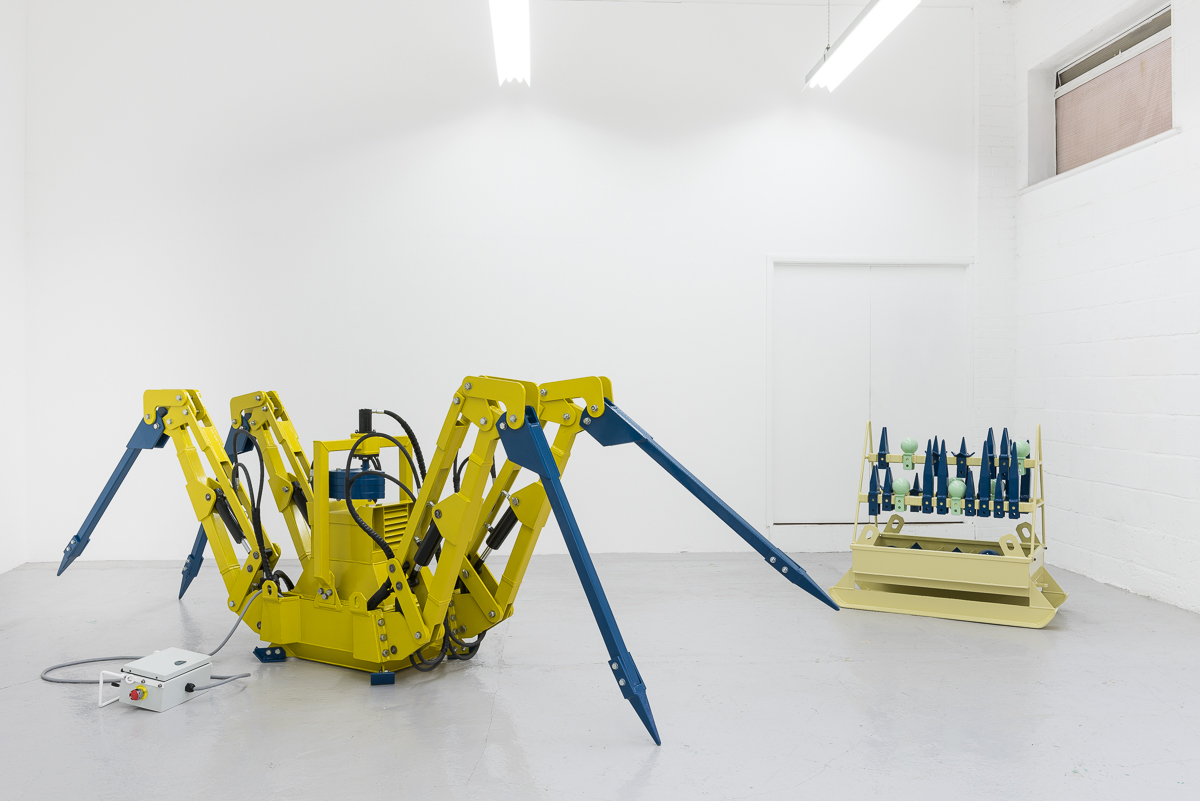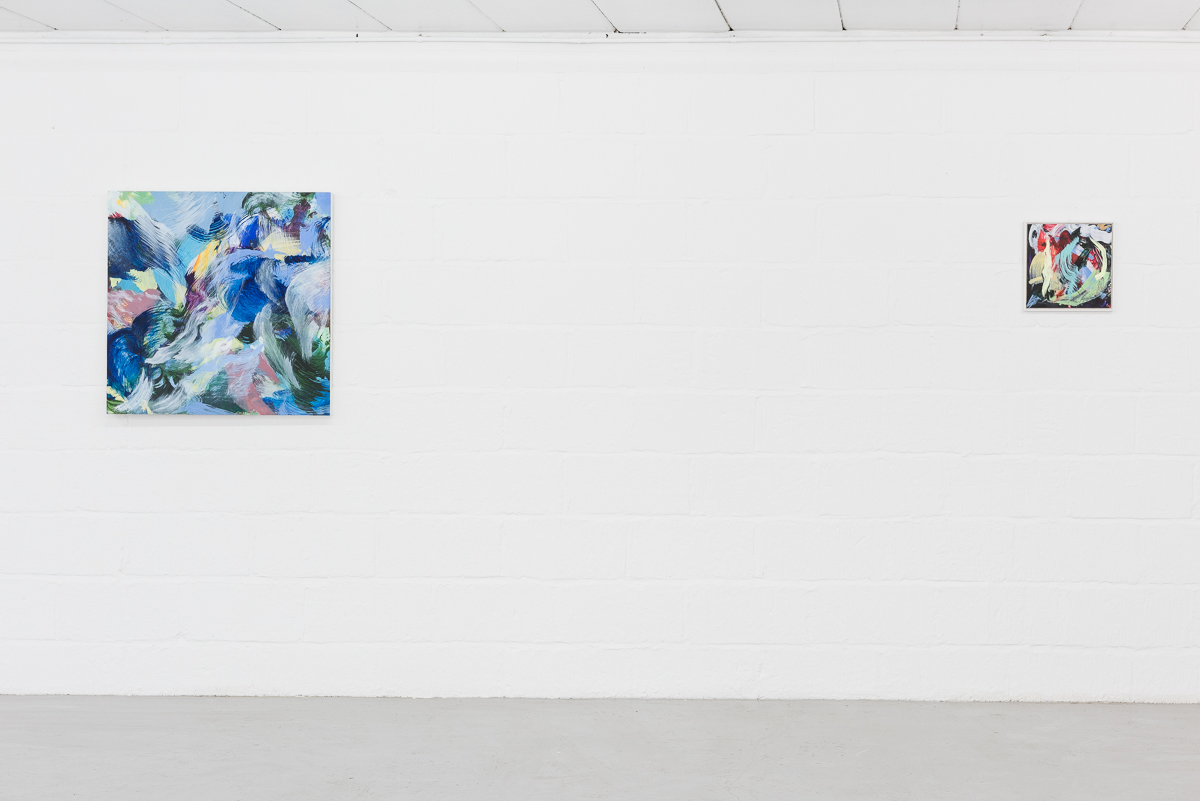James Capper

"MOST PEOPLE LOOK INTO MY STUDIO AND CONSIDER IT A WELDING OR FABRICATION WORKSHOP"
As these mechanical sculptures walk they scarify the earth, leaving marks/footprints. Would you say that your work addresses mark making as well as performance and sculpture?
Its important to point out that the EARTH MARKING DIVISION is an evolving experiment in the radical methods of walking locomotion in mobile hydraulic systems and therefore one element of the expansion of mobile sculpture. Of course these mobile sculptures leave marks in their path which along with the process of mark making is fundamentally important in progressing the evolution of future works.
However, after the fabrication of a new work is complete, it is the extensive testing and subsequent understanding of the full scope or capacity of the sculpture for carrying out its intended purpose (in the case of sculptures in this Division, mark marking) after it is fabricated that concerns me, rather than the particular documentation or preservation of the marks themselves.
That's why the documentary medium that suits me best is film-making: documentation of the marks left by for instance the RIPPER TEETH can be seen in the film RIPPER TEETH IN ACTION, a public project commissioned in 2011 by Modern Art Oxford.
Following the testing phase, ongoing demonstrations of the sculpture in action is an important part of the work. They allow the viewer to survey the sculptures fully operational in an environment - whether this be a gallery space or area of land or particular terrain. In the process of these field demonstrations I am constantly undertaking vital research and gathering new understandings of the mobile process and capacity.
It is important to understand that my mobile sculpture works are not robots - each hydraulic cylinder / motor is operated by a joystick or lever valve. Because of their mechanical uniqueness I tend to be the sole operator.
Could you tell us a bit about yourself. How long have you been a practicing artist and where did you study?
Lots of people have asked me if I studied engineering, I went and studied sculpture at Chelsea School of Art and graduated from the RCA in 2010. I was taught welding, steel fabrication, hydraulic, electric and mechanical engineering by the many characters I worked with on jobs with before art school - on farms and in mechanics workshops close to home in Kent.
What do you hope the viewer gains/reacts from looking at your work?
I hope to think they consider there is still room for innovation in the language of sculpture, that skill-based practice still exists and that the sculptor produces an unregulated number of raw ideas that are made manifest in the works.
EARTH MARKING EXPEDITION, Hannah Barry Gallery, 2016
Could you tell us about the process of making these machines, from the drawings to the actual engineering and assembly?
Drawing is the one area in the practice that doesn't have any restrictions. It's an enjoyable part of the work, recovering raw ideas and making them a reality on paper. Engineering is often seen as a rigid subject where there may only be a limited number of methods to solve a problem. Involving engineering with sculpture makes an interesting and very creative method of problem solving.
Most people look into my studio and consider it a welding or fabrication workshop. The tools and equipment I use to make the sculpture is all industrial, which I bought second hand, but it makes a massive difference to have well-made tools. For many years I just slaved away with equipment that would pack in right when you would need it most. Now for example I have a machine called an ironworker that can shear and punch holes through 15mm steel plate!
Using this equipment in the studio allows me to produce my sculptures independently of any steel fabricators or technicians. The engineering techniques in welding and hydraulics are only known to a handful of fabricators so for me it is much better that I can build my own work.
Next to my studio is a powder coating factory. Powder coating is a fantastic method of painting block colour on large surface areas of mild steel through a baking process. When the sculptures come out of the oven I often feel they were made by someone else due to the slick colour finish!
Could you tell us about the names of these machines?
A name is usually based on the sculpture's anatomy, I sometimes get words stuck in my head, sometimes they are humorous combinations and often they reference the organic world - insects, birds, etc.
Tell us a bit about how you spend your day/studio routine, what is your studio like?
I have over the years adopted the working day of a tradesman or building contractor, only because my studios have always been situated around light industrial sites in London! I started this morning, with finishing the sanding of a small maquette that will be powder coated this afternoon. I like having interactions with all sorts of different people, from the powder coaters, welders to the gallery and artists in the area. The studio allows all these people to cross paths - it's more than just a roof and walls. The studio is also a fabrication workshop, that's constantly changing depending on what's getting built. I often imagine it being a ship I have to sail through good and bad seas!
EARTH MARKING EXPEDITION, Hannah Barry Gallery, 2016
What artwork have you seen recently that has resonated with you?
I was in New York recently and saw a fantastic show at Paul Kasmin Gallery, IMPASSE RONSIN, it's about how a major group of sculptors and artists who all worked in studios in the same small Parisian alleyway, Jean Tinguely and Constantin Brancusi works were fantastic and a reminder of my early interests in sculpture. At the very back of the gallery there was a separated room that recreated the sculptor Isamu Noguchi's studio, this for me was fascinating seeing the tools that he used to produce his sculptures..
What does the future hold for you as an artist? Is there anything new and exciting in the pipeline you would like to tell us about?
I have a lot of projects on which is exciting - one that involves a sculpture to skiing down a mountain in the Swiss Alps! Another with Edward Campbell that involves two sculptures being filmed in a very remote area of New South Wales in Australia. Another is a project in Mexico at the studio of the artist Bosco Sodi. I'm constantly trying to convince various people I work with to help build my walking ship, it's a step by step project that has colossal implications! I am also in the middle of MOUNTAINEER an ongoing piece of research into a mobile sculpture that can climb mountains using its four telescopic legs - I just returned from its second testing phase in Wassick, Upstate New York!
James Capper's work is currently on show at the Hannah Barry Gallery (London) alongside the painter Shaun McDowell, open till the 30th November.
Publish date: 25/11/16
All image courtesy of Hannah Barry Gallery






